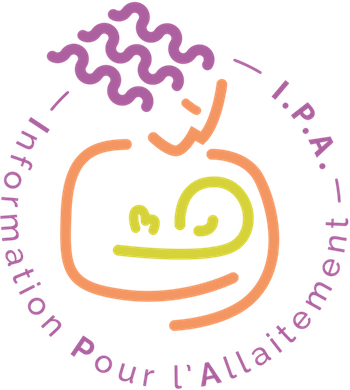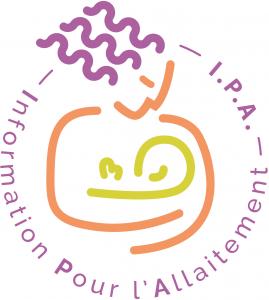Catégories
Documents disponibles dans cette catégorie (137)
Article : texte imprimé
Objective: Disparities in U.S. breastfeeding rates persist among Black mothers according to birth country and between Black and White mothers, necessitating further investigation of modifiable mediating factors to inform interventions. This stud[...]Article : texte imprimé
Caixin Yin, Auteur ; Xi Su, Auteur ; Qiuxia Liang, Auteur |Objective: To evaluate the effects of a baby-led self-attachment breastfeeding support intervention on the prevalence and duration of exclusive breastfeeding and nipple pain at 3 days, 6 weeks, 3 months, and 6 months postpartum among Chinese mot[...]Nouveauté
Article : texte imprimé
Jonathan L. Abbott, Auteur ; Jenava R. Carty, Auteur ; Eileen Hemman, Auteur |Objective: To compare the effect of early versus traditional postpartum follow-up intervals on breastfeeding continuation rates 6 months postpartum. Methods: This randomized controlled trial enrolled primiparous women planning to breastfeed t[...]Article : texte imprimé
Laurie B. Griffin, Auteur ; Julia D. López, Auteur ; Megan L. Ranney, Auteur |Background: Low-income women are less likely to breastfeed than high-income women. Technology-based interventions demonstrate promise in decreasing health disparities. We assessed whether increased use of breastfeeding smartphone applications (a[...]Article : texte imprimé
Engaging African American Parents to Develop a Mobile Health Technology for Breastfeeding: KULEA-NET
Loral Patchen, Auteur ; Lindsey Ellis, Auteur |Background African Americans breastfeed less than other groups, which has implications for health throughout the life course. Little is known about mobile health technologies to support breastfeeding. Research aims This study proceeded in t[...]Article : texte imprimé
Lydia Furman, Auteur ; Steve Killpack, Auteur ; Lisa Matthews, Auteur |Purpose: Our objective was to pilot a method of engaging fathers/partners of high-risk inner-city mothers in breastfeeding support. Materials and Methods: Breast for Success was a breastfeeding promotion initiative with a father engagement co[...]Article : texte imprimé
Examining the Baby Café Model and Mothers' Breastfeeding Duration, Meeting of Goals, and Exclusivity
Lucia A. Jenkins, Auteur ; Katie Barnes, Auteur ; Angela Latter, Auteur ; Roger A. Edwards, Auteur |Objective: Accessible community lactation support impacts a woman's breastfeeding success by offering timely intervention and solutions, thereby allowing mothers to achieve breastfeeding goals and improve overall breastfeeding rates. Although th[...]Article : texte imprimé
Kathryn E. McIsaac, Auteur ; Wendy Lou, Auteur ; Daniel Sellen, Auteur |Background: Very little population-based research has been conducted around the exclusive breastfeeding practices of Inuit Canadians. Objectives: This research aims to assess the distribution of exclusive breastfeeding among Inuit Canadians[...]Article : texte imprimé
Roslyn Giglia, Auteur ; Kylee Cox, Auteur ; Yun Zhao, Auteur |Background: Exclusive breastfeeding for 6 months is acknowledged universally as the optimal feeding method for infants in order to provide the greatest health and well-being gains for the infant and mother. Despite this, many women stop short of[...]Article : texte imprimé
Nikmah Salamia Idris, Auteur ; Sudigdo Sastroasmoro, Auteur ; Fatimah Hidayati, Auteur |Objectives: This study investigated factors involved in breastfeeding planning of pregnant Asian women. Subjects and Methods: A cross-sectional study was conducted on 207 pregnant women visiting the Budi Kemuliaan Hospital, Jakarta, Indonesia[...]Article : texte imprimé
Kelly K. Gurka, Auteur ; Paige P. Hornsby, Auteur ; Emily Drake, Auteur |Background: Low-income women have the lowest rates of breastfeeding in the United States. Greater understanding of factors that predict intention to feed artificial breastmilk substitute is needed to inform the design and timing of interventions[...]Article : texte imprimé
Abigail Harrison, Auteur ; Shani Fletcher-Groves, Auteur ; Georgiana Gordon-Strachan, Auteur |Background: Exclusive breastfeeding rates (EBRs) may be influenced by sociodemographic and sociocultural factors, including maternal age, socioeconomic status, education, and breastfeeding knowledge. The EBR in Jamaica has been low and declinin[...]Article : texte imprimé
Ana Maria Linares, Auteur ; Mary K. Rayens, Auteur ; Ann Dozier, Auteur |Background: Although Hispanic mothers in the United States have slightly higher rates of breastfeeding initiation than the national average, they are more likely to supplement with formula. Objectives: To describe infant feeding decisions i[...]Article : texte imprimé
"Background: Availability of professional lactation support has been associated with increased breastfeeding rates; however, data about access to international board-certified lactation consultants are limited. Research Aims: The aims were [...]Article : texte imprimé
Ka Lun Wong, Auteur ; Marie Tarrant, Auteur ; Kris Y.W Lok, Auteur |Although breastfeeding initiation rates have increased substantially in many developed countries over the past several decades, breastfeeding duration and exclusivity remain suboptimal. In the antenatal period, both group and individual educatio[...]Article : texte imprimé
Florian Steger, Auteur ; Oxana Kosenko, Auteur |“The mother’s milk collecting station should be used where the breastfeeding of a vulnerable or sick infant is not possible” (Kayser, 1933, p.). The German pediatrician Marie-Elise Kayser (1885–1950) wrote those words in 1927. However, understan[...]Nouveauté
Article : texte imprimé
Radha Sadacharan, Auteur ; Xena Grossman, Auteur ; Stephanie Matlak, Auteur |Background: Distribution of industry-sponsored formula sample packs to new mothers undermines breastfeeding. Objective: Using data from the Infant Feeding Practices Study II (IFPS II), we aimed to determine whether receipt of 4 different ty[...]Article : texte imprimé
"même dans ces pays, l’impact de pratiques d’allaitement non optimales est visible sur la prévalence des infections et celle des antibiothérapies et des hospitalisations en rapport avec ces infections. Le but de cette étude était d’évaluer l’imp[...]Article : texte imprimé
Melissa E. Glassman, Auteur ; Karen McKearney, Auteur ; Minna Saslaw, Auteur |Background: Latinas have high breastfeeding initiation rates that decrease significantly in the first postpartum months. Little is known about the effects of self-efficacy and sociocultural factors on early breastfeeding among low-income Latinas[...]Article : texte imprimé
Moshe Yair Kassierer, Auteur ; Deborah L. O'Connor, Auteur ; Eva Rutherford, Auteur |Jewish law recognizes the importance of breast milk, and breastfeeding rates are high among religious mothers. Infants born at very low birth weight are medically fragile, and breast milk is of critical importance for their health protection and[...]Article : texte imprimé
Hara Takako, Auteur ; Matsumoto Mizue, Auteur ; Hosotani Izumi, Auteur |The leadership team at the Center for Maternal, Fetal and Neonatal Medicine, Saitama Medical Center, Saitama Medical University in Tokyo, Japan sought to improve our human milk (HM) and breastfeeding rates for vulnerable infants. This article de[...]Article : texte imprimé
Maaike Arts, Auteur ; Irum Taqi, Auteur ; France Bégin, Auteur |To ensure that newborns benefit optimally from breastfeeding from the first hour of life, health professionals and policy makers need to significantly improve the protection, promotion, and support for breastfeeding in maternity facilities. This[...]Article : texte imprimé
Margaret G. Spinelli, Auteur ; Jean Endicott, Auteur ; Raymond R. Goetz, Auteur |There has been a considerable increase in rates of breastfeeding in the United States. Despite these trends, black women continue to fall below medical recommendations. Impoverished and poorly educated women also have a comparatively lower rate [...]Article : texte imprimé
Keyaria D. Gray, Auteur ; Emily A. Hannon, Auteur ; Elizabeth Erickson, Auteur |Background Human milk feeding reduces the incidence and costs of several maternal and childhood illnesses. Initiation and success of human milk feeding are influenced by race, socioeconomic status, and family support. The influence of early in-[...]Nouveauté
Article : texte imprimé
Influence of Partner Support on an Employed Mother's Intention to Breastfeed After Returning to Work
Su-Ying Tsai, Auteur |Background: Despite the increasing number of large companies complying with the demands for a breastfeeding-friendly workplace, providing on-site lactation support, some mothers still find continuing to breastfeed a challenge. We postulated that[...]






























